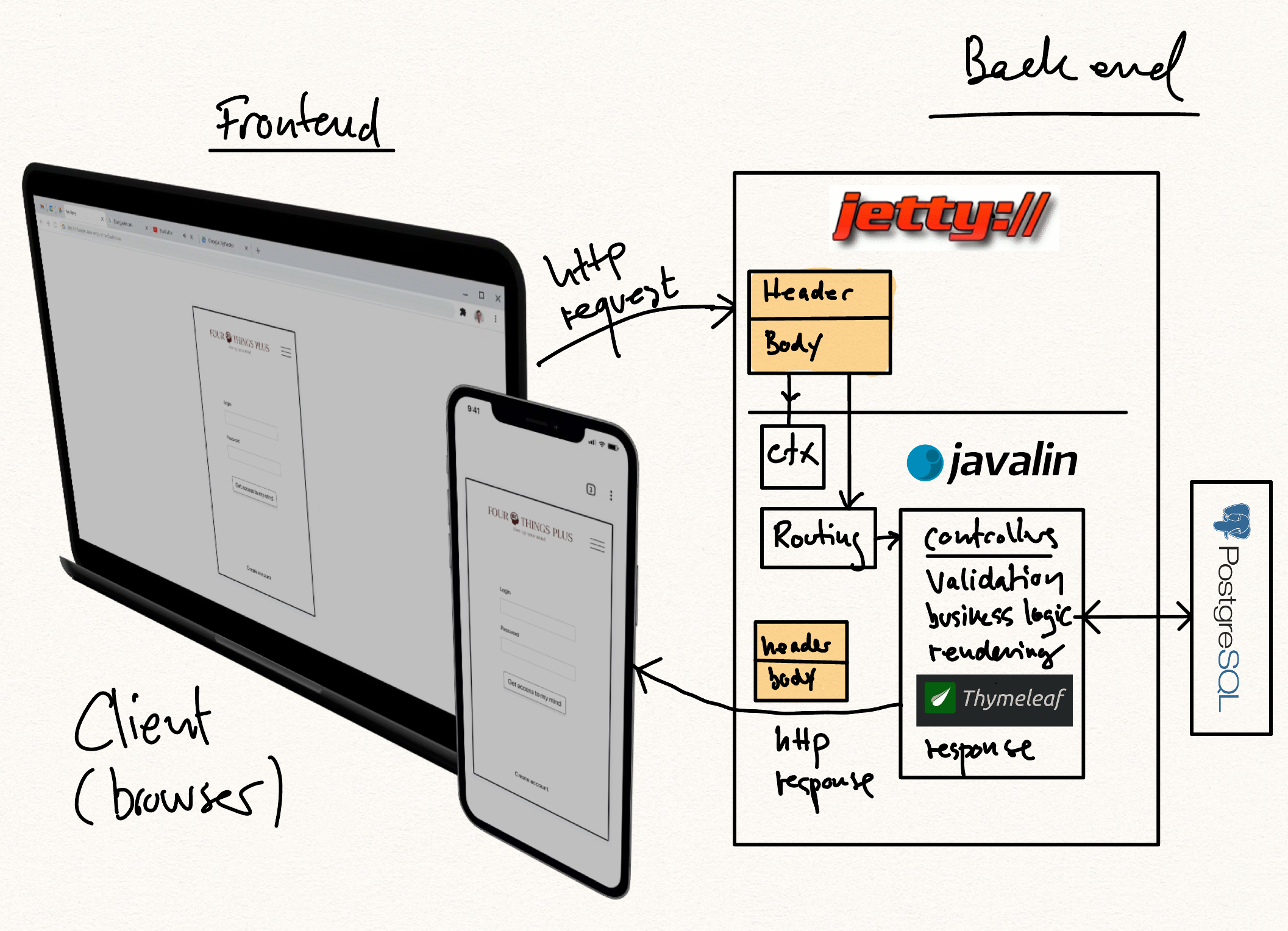How a request/response cycle is handled
This is a rough description of a request/response cycle. The focus is on where the responsibility for each part of the handling is carried out:

The request
An http request is sent from the browser. A header and maybe also some data is sent. The data is carried in the request body - which is sometimes also called the payload.
An http request is usually either:
-
GET: requesting a page. Some query parameters could be sent along in the header. Like
http://dr.dk?id=1&cat=dr1. -
POST: usually creating new entities on the server. Some payload are added to the request. Usually as form-data.
-
UPDATE. This method is mostly used sending update requests to an API endpoint.
-
DELETE. This method is mostly used sending a delete request to an API endpoint.
Receiving the request
This is the role of the webserver. In our case: “Jetty” which listens on a port. Jetty also parses the http-header. The header properties and the payload can be accessed in Javalin through the ctx object. An example could be ctx.header("Host"). Data from the browser can be extracted in Javalin as ctx.formParam("username") or ctx.queryParam("id").
Executing the request
In Javalin the route handlers / controllers carries out the business logic, validates the input data, executes crud operations on the database etc. This code we write ourselves in Java.
Preparing the response
When the business logic is executed we prepare the response for the client. In other words: what we want to send back to the requesting browser. The final response is in our case a piece of html. The html is generated by the help of our template engine Thymeleaf. To do that we might add some data to the ctx object maps. Like ctx.attribute or ctx.sessionAttribute. And lastly we render an html page: ctx.render("page.html"). The render method uses Thymeleaf to render the page - and after that sends the response with correct http header etc. The html is sent as payload.
